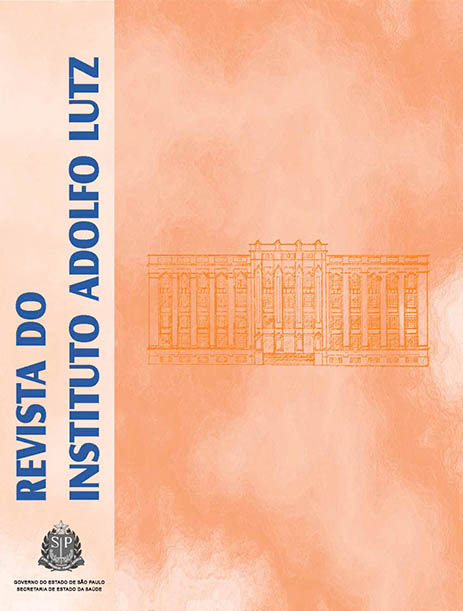Abstract
This study evaluated the concentrations of retinol in the yolks of quail and chicken boiled eggs, and they were correlated with the vitamin A intake recommendations for children aged from 1 to 8 years. The samples were analyzed by means of High Performance Liquid Chromatography. The mean values of retinol found in the yolks of the quail and chicken boiled eggs were 636.6 ± 32.7 and 379.1 ± 30.8 μg/100 g of yolk, respectively. The retinol concentration in quail egg was found to be significantly higher than that of chicken egg (p < 0.0001). In addition, it was found that the consumption of a 15 g-portion of egg corresponded to five quail egg yolks or to one chicken egg yolk; then, they supplement 32% and 19% of the daily retinol recommendations for children aged from 1 to 3 years, respectively, and 24% and 14% for children aged from 4 to 8 years, respectively. Therefore, both kinds of eggs are a good source of vitamin A.References
1. Dimenstein R, Nascimento THCR, Melo ILP, Ribeiro KDS. Avaliação dos níveis de retinol no colostro humano e sua relação com o estado nutricional materno em vitamina A. Rev Bras Med. 2006;65(5):206-10.
2. Geraldo RRC, Paiva SAR, Pitas AMCS, Godoy I, Campana AO. Distribuição da hipovitaminose A no Brasil nas últimas quatro décadas: ingestão alimentar, sinais clínicos e dados bioquímicos. Rev Nutr. 2003;16(4):443-60.
3. Sarni RS, Kochi C, Ramalho RA, Schoeps DO, Sato K, Mattoso LCQ, et al. Vitamina A: nível sérico e ingestão dietética em crianças e adolescentes com déficit estatural de causa não hormonal. Rev Assoc Med Bras. 2002;48(1):48-53.
4. McLaren DS, Frigg M. Manual de ver y vivir sobre los transtornos por deficiência de vitamina A (VADD). Washington (DC): Organización Panamericana de la Salud; 1999.
5. Santos MA, Rezende EG, Lamounier JA, Galvão MAM, Bonomo E, Leite RC. Hipovitaminose A em escolares da zona rural de Minas Gerais. Rev Nutr. 2005;18(3):331-9.
6. Dimenstein R, Albuquerque EM, Fernandes LL, Lourenço RMS. Prevalência de Hipovitaminose A em puérperas da Maternidade Escola Januário Cicco – Natal/RN. Nutrire: Rev Soc Bras Alim. 2006;31(3):37-45.
7. Lopes RE, Ramos KS, Bressani CC, Arruda IK, Souza AI. Prevalência de anemia e hipovitaminose A em puérperas do Centro de Atenção à Mulher do Instituto Materno Infantil Prof. Fernando Figueira, IMIP: um estudo piloto. Rev Bras Saúde Mater Infant. 2006;6(1):S63-S68.
8. Dantas JCO, Medeiros ACP, Rodrigues KDSR, Dimenstein R. Concentração sérica de retinol e prevalência de deficiência de vitamina A em puérperas. Rev Bras Prom Saúde. 2011;24(1):40-5.
9. Fernandes TFS, Diniz AS, Cabral PC, Oliveira RS, Lóla MMF, Silva SMM, et al. Hipovitaminose A em pré-escolares de creches públicas do Recife: indicadores bioquímico e dietético. Rev Nutr. 2005;18(4):471-80.
10. Dolinsky M, Ramalho A. de Deficiência vitamina A: uma revisão atualizada. Rev Compacta –Temas Nutr Aliment On-Line. 2003;4(2):7-18. [acesso 2004 dez 5]. [Disponível em http://www.pnut.epm.br/compacta.htm.]
11. Ministério da Saúde (BR). Pesquisa Nacional de Demografia e Saúde da Criança e da Mulher (PNDS-2006). [acesso 2012 mar 22]. [Disponível em: http://bvsms.saude.gov.br/bvs/pnds/anemia.php.]
12. Rodrigues KRM, Salay E. Atitudes de granjeiros, atacadistas, varejistas e consumidores em relação à qualidade sanitária do ovo de galinha in natura. Rev Nutr. 2001;14(3):185-93.
13. Bragagnolo N, Rodriguez-Amaya DB. Comparison of the cholesterol content of Brazilian chicken and quail eggs. J Food Comp Anal. 2003;16(2):147-53.
14. Nierenberg DW, Nann SL. A method for determining concentration of retinol, tocopherol, and five carotenoids in human plasma and tissue samples. Am J Clin Nutr 1992;56(2):417-26.
15. Bardos L, Soter G, Karchesz K. Effect of retinyl acetate, ascorbic acid and tocopherol supplementation of the feed on egg vitamin A content in japonese quail. Acta Veter Hung. 1996;44(2):213-9.
16. Karadas F, Surai PF, Sparks NHC, Grammenids E. Effects of maternal dietary supplementation with three sources of carotenoids on the retinyl esters of egg yolk and developing quail liver. Comp Biochem Physiol B Biochem Mol Biol. 2005;41(2):244-51.
17. Ramalho HMM, Silva KHD, Santos VVA, Cavalcanti JS, Dimenstein, R. Effect of retinyl palmitate supplementation on egg yolk retinol and cholesterol concentrations in quail. Braz Poult Sci. 2008;49(4):475-81.
18. Marques RH, Gravena RA, Silva JDT, Roccon J, Picarelli J, Hada FH, et al. Effect of supplementation of diets for quails with vitamins A, D and E on performance of the birds and quality and enrichment of eggs. Rev Bras Zootec. 2011;40(6):1222-32.
19. Surai PF, Ionov IA, Kuklenko TV, Kostjuk IA, Acpherson AM, Speake BK, et al. Effect of supplementing the hen’s diet with vitamin A on the accumulation of vitamins A and E, ascorbic acid and carotenoids in the egg yolk and in the embryonic liver. Braz Poult Sci. 1998;39(2):257-63.
20. Ollilainen V, Heinonen M, Linkola E, Varo P, Koivistoinen P. Carotenoids and retinoids in Finnish foods: dairy products and eggs. J Dairy Sci. 1989;72(9):2257-65.
21. Squires MW, Naber EC. Vitamin profiles of eggs as indicators of nutritional status in the laying hen: riboflavin study. Poultry Sci. 1993;72(3):483-94.
22. Mendonça CX, Almeida CRM, Mori AV, Watanabe C. Effect of Dietary Vitamin A on Egg Yolk Retinol and Tocopherol Levels.J Appl Poult Res. 2002;11(4):373-8.
23. Verruma MR, Salgado JM. Análise química do leite de búfala em comparação ao leite de vaca. Sci Agric. 1994;51(1):131-7.
24. Mahan LK, Escott-Stump, S. In: KRAUSE: Alimentos, Nutrição e Dietoterapia. 10. ed. São Paulo (SP): Roca; 2002.
25. McLaren DS, Frigg M. Guía de Sight and Life sobre la Vitamina A en los Estados de Salud y Enfermedad. 2. ed. 2002. [Disponível em: http://www.sightandlife.org/ booksSALpdf/GBspan.pdf.]
26. Souza WA, Vilas Boas OMG. A deficiência de vitamina A no Brasil: um panorama. Rev Panam Salud Publica. 2002;12(3):173-9

This work is licensed under a Creative Commons Attribution 4.0 International License.
Copyright (c) 2012 Instituto Adolfo Lutz Journal
